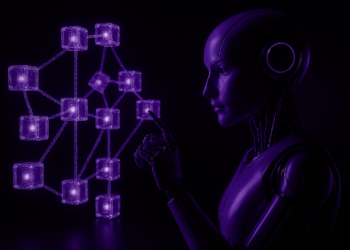Devising a successful product is not easy, even more so in the current context where technology is changing the world and promoting change at an unprecedented rate. Our environment is changing fast and becoming more and more complex.
As we have become consum’actors, organisations have been motivated to adapt their activities to new consumption habits. The current health crisis demonstrates this to us regularly. Power has changed hands, and it is now the customer who holds it.
Organisations are embracing new ways of working, with new tools and methods, hoping they will help them deliver better solutions. Agility has become a matter of survival, an end rather than a means.
Agility is no longer a subject of debate; however, its implementation is sometimes open to criticism because it focuses mainly on the design and development stages. For our consultant, Daniel MOYA, product coach and agile expert at Wemanity, “organisations forget to ask themselves if it is the right product, the one that will delight and bring value to a volatile user that they must satisfy continually…”. Here he offers us some answers to this problem.
1. Traps to avoid
Even today, an organisation’s digital transformation is too often seen as a transformation project and not as a continuous cultural change. Adopting new methods and new tools is good. But to anchor the change sustainably, we must also modify the attitude of individuals and the corporate culture … that’s much better!
It is easy to observe the rules that have long been followed by the actors in the company to understand that they do not encourage autonomy or the taking of initiative – quite the contrary. “Organisations are adopting Lean Startup or Design Thinking, within a sequential design process that is still immutable today, and provides a false sense of innovation. Design washing is a trend.” Daniel says, annoyed. We need to adopt an evolutionary design process based on constant and regular discovery and learning.
The doctrine consists of reassuring yourself by being predictive as soon as possible to limit uncertainty and, therefore, risk. Even if it is wrong, following the plan is making progress, even in the wrong direction. Change is still perceived as an anomaly and not as an opportunity for improvement. “No business plan can survive the first customer contact,” said Steve Blank, Silicon Valley entrepreneur and father of the Lean Startup mindset. “Innovating like a startup [explains Daniel] is more a change of mindset than a change of tool or method”.
“A lot of our ideas don’t work, at least not the first time, and for various reasons,” laughs Daniel.
The real birth of a product occurs when the business meets the customer, not during the first stages of reflection.
This is not the time to demobilise teams; on the contrary, the most important information comes directly from the customers themselves, observing their problems and analysing the behavioural data they generate as they use the product. “Encourage regular and continuous exploration of new solutions to very real problems,” insists Daniel.
2. The keys to success
In response to this challenge, Daniel advocates mastering techniques for experimenting with ideas quickly and cheaply, keeping only those worth implementing, and accepting that the vast majority of ideas are simply never implemented. “This is a fundamental change in the usual design process,” Daniel acknowledges. The decision to launch developments is thus delayed until it becomes really necessary after validating the hypotheses with tangible facts.
“In reality [Daniel notes], too many decisions are based on the judgment or intuition of only a few people. Our brain’s quick thinking makes assumptions about the user’s behaviour”. No amount of intuition can replace thorough research and a comparison of potential solutions with users. Find the right balance between qualitative and quantitative approaches and increase information gathering, experimentation and observation. “It costs less than a development, especially if you are wrong,” says Daniel.
The key to innovating is the speed of execution and short cycles where you iterate over a whole range of activities. “This is a recurring misunderstanding [notes Daniel]; organisations use a sequential process, where steps follow one after the other with no way back, and not within a continuous process”.
Observation of user behaviour, for example, is regularly carried out during the first reflections and from a paper model or prototype. “It is not uncommon to find that the user’s behaviour is very different from what we had imagined, and it is customary to blame the user without questioning ourselves since the work done beforehand is necessarily correct,” says Daniel, ironically.
To design a successful product, including for the giants of Silicon Valley where everything may seem easy, is to undertake a product with strong choices that usually contains few features but makes the service better. It is all but a patchwork of clumsily nested features: today’s consumer is looking for a promise of value.
“Accept the fact that it is rare to achieve excellence at the first attempt,” advises Daniel. If the user makes little or no use of your features, it is not necessarily that they are bad in themselves; it may be that they simply cannot use them. “You are not representative of all your product’s users. Involving them in the design process early and continuously helps you understand them better and test your latest ideas quickly,” Daniel confirms. It is becoming more and more essential to know your users and their problems and ensure that your product can always attract and retain new users. “Can a business that doesn’t engage a community survive in the digital age?” Daniel asks.
“Changing the ingredients is not enough to turn a mediocre dish into something worthy of a gourmet restaurant; on the contrary, changing the recipe is absolutely essential,” he says. The digital world we live in today has made a traditional marketing mix and business models obsolete. The organisation must reinvent itself and acquire the necessary cultural codes and knowledge to establish new reflexes, as some would say, cultural change.












